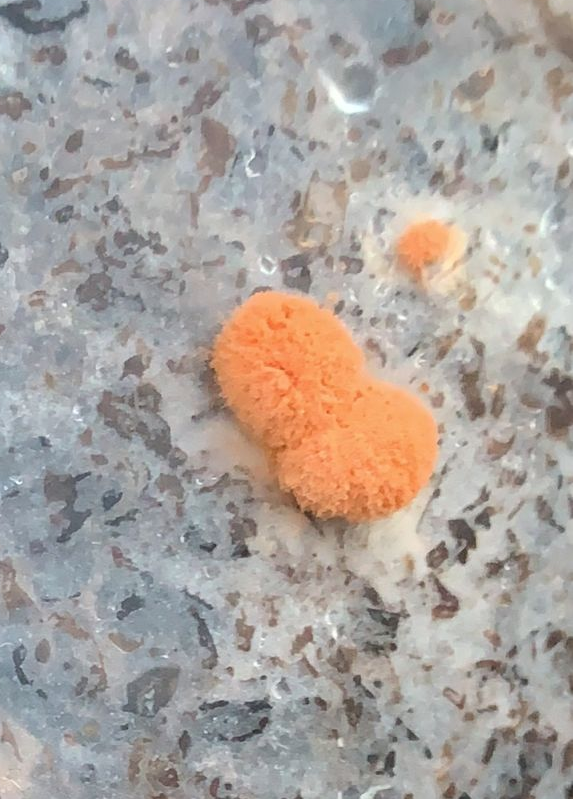Spotting Signs of Contamination
What the Fungi !?!?
Sectoring (Fungi-Fungi): Described by a distinctive border between two different types of fungal species. Often a line of metabolites (brownish water) may be seen where the two fungi meet.
Sectoring (Fungi-Bacteria): With bacterial contamination, the contaminated area will appear normal or uncolonized. When mycelium approach these boarders there will be a sudden clear cut and presence of brownish metabolites.
Sporophores: These are Fungus species that produce Spores at the end of their mycelium. This can easily be spotted with the human eye as black specks or by disturbing the “mycelium” it will produce a visible spore cloud. The appearance of the larger sporophores before maturation typically resembles a small whisker with a white dot on the end. They can also look “Dusty” and vary in color from Black, White, Green, Grey, Yellow, Orange, etc.
Odor: Odor can be extremely helpful in detecting contaminants when it's not visible. It can also be helpful in telling mushroom mycelium from molds that resemble mushroom mycelium. It is sometimes possible to catch a hidden mold in a spawn jar simply by smelling the spawn before spawning. Odors are easiest to detect immediately after shaking, if it doesn’t smell like Mushrooms it’s contaminated.
Slime: A common sign of bacteria is a slimy appearance of mycelium or grains. In areas where substrate presses against glass and condensation is present brown-yellow slimy rings are often present around the grains. The material will also look sludgy and thick, bacterial contamination often accompanies an odor of fermentation or decay.
Spongey or Soft: Your Mycelium block is soft and squishy. This is indicative of contamination within the block as Mushroom Mycelium has not fully colonized the substrate.









